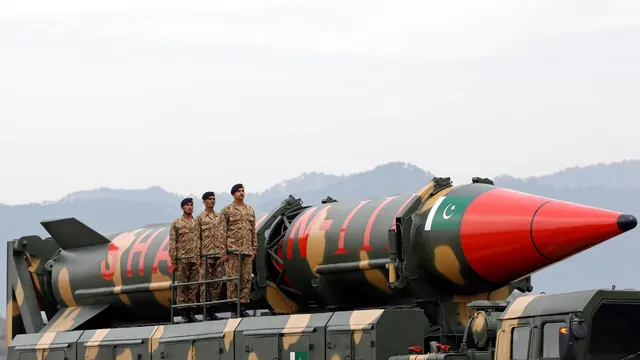- By Shivangi Sharma
- Tue, 12 Aug 2025 06:17 PM (IST)
- Source:JND
A fiery remark by Pakistan’s Army Chief Asim Munir has sparked international attention and criticism. Speaking at an event in Tampa, Florida, he warned that if Pakistan faced an existential threat in a future conflict with India, it would “take half the world down” with it. The statement came against the backdrop of heightened tensions after India suspended certain provisions of the Indus Waters Treaty following the Pahalgam terror attack that killed 26 people.
Ministry of External Affairs dismissed the comments as “nuclear sabre-rattling” and questioned the maturity and reliability of Pakistan’s nuclear command structure.
Reality Of Pakistan’s Nuclear Arsenal
According to the Stockholm International Peace Research Institute (SIPRI) 2025 Yearbook, Pakistan possesses around 170 nuclear warheads and is working toward a full nuclear triad, land, air, and sea-based delivery systems. Its most advanced missile, the Shaheen-3, can travel about 2,750 km, enough to strike anywhere in India and parts of the Middle East, but far from capable of reaching Europe, East Asia, or North America.
The Ababeel missile, with a range of 2,200 km, is said to have potential for multiple independently targetable re-entry vehicles (MIRVs), but its operational capability remains unproven. Other missiles like the Fatah-II (400 km range), Ghauri-II (2,000 km), and Babur-3 submarine-launched cruise missile (450 km) provide regional strike options, not global reach.
Short-range tactical weapons such as the Nasr (70 km) are designed for battlefield use, further underscoring Pakistan’s focus on deterring India rather than threatening the wider world.
Missing Ingredients For Global Strike Capability
For Islamabad to credibly threaten “half the world,” it would require:
Intercontinental ballistic missiles (ICBMs) with ranges over 8,000 km.
Strategic bombers with intercontinental reach.
A fully operational sea-based nuclear deterrent capable of surviving a first strike.
Pakistan currently has none of these. Its arsenal is optimised for regional deterrence, particularly against India, and perhaps limited targets in the Middle East and Eastern Europe.
Unlike India’s declared No First Use policy, Pakistan maintains deliberate ambiguity in its nuclear posture. This includes the potential use of short-range nuclear weapons early in a conflict to deter a conventional Indian military advance. While this makes Pakistan’s deterrence strategy more unpredictable, it does not translate into global strike capacity.
The claim of being able to “take half the world down” is more rhetorical bluster than strategic reality. Pakistan’s nuclear weapons are formidable within South Asia, but without ICBMs, long-range bombers, or a robust second-strike capability, Islamabad’s reach is geographically limited. The real danger lies not in a world-ending strike, but in the destabilising effect of such rhetoric on a volatile nuclear standoff with India.

